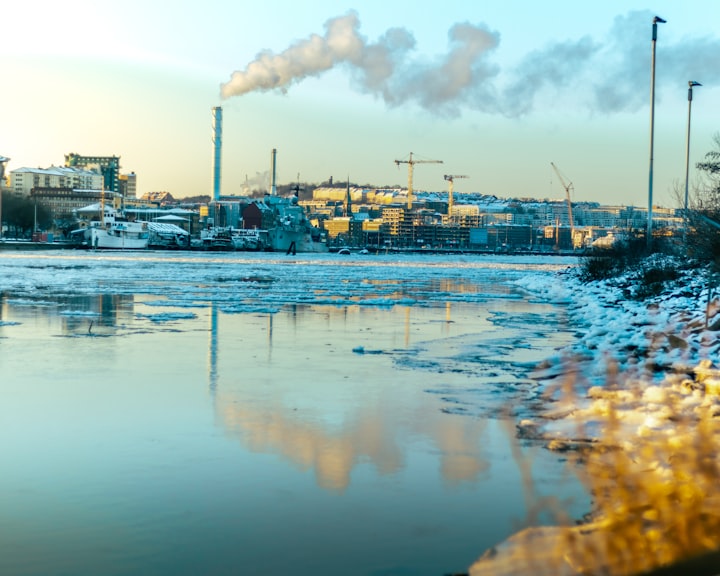Types of Water Pollution? How to Avoid Water Pollution?
Water Pollution Management !

What is Water Pollution?
Water Pollution refers to any type of contamination that can occur due to the drainage of contaminated water, either surface runoff or groundwater. What exactly is water pollution? Water pollution occurs when contaminants such as heavy metals, pesticides and bacteria are introduced into the natural water system. These contaminants then interact with living organisms present in the water system, resulting in the generation of toxic byproducts.
Water Pollution is the worst form of pollution. It causes environmental harm to the environment and human beings. Water pollution is the general pollution of water bodies, in most cases due to human activities. Water bodies comprise for instance oceans, lakes, rivers, aquifers, groundwater and other sources. Water pollution occurs when various contaminants are inadvertently introduced into the environment.
How Water Pollution Affects the Ecosystem?
Water pollution can result in different types of aquatic ecosystems. This includes a depletion in oxygen demand, disturbances in eco-systems, reduction in the biological richness, increase in pollutant load and introduction of chemicals and pesticides.
The reduction in oxygen demand results in a reduction in fish productivity, a decrease in aquatic ecosystem functioning and ultimately an increase in toxic waste. The depletion of oxygen in the aquatic systems leads to a disruption of the eco-system. The ecosystems no longer function as they should and aquatic ecosystems are altered as a result.
Common Water Pollutant?
One of the most common water pollution (Water pollution essay) issues includes the pollution of rivers and water resources. Contaminants from agricultural runoff and sewage are discharged into rivers and bodies of water. Industrial wastes, pharmaceutical drugs and other chemical wastes from manufacturing plants are discharged into the rivers.
These pollutants are usually deposited on the banks of rivers. When the sediments flow with the flow of water, they carry with them many contaminants that eventually end up in the bodies of water.
Examples of the pollutants?
1. Heavy Metals
Examples of the pollutants that contaminate rivers are heavy metals, bacteria, chemicals and pesticides. Chemical pollutants that pose a threat to the river's oxygen demand include benzene, nitrates, pesticides, polychlorinated biphenyls and TCE. Heavy metals that endanger the oxygen supply are lead, arsenic, mercury and cadmium.
2. Human Waste
Another common cause of water pollution is from human waste and industrial wastes. Domestic wastewater, used oil, grease, oils and fertilizers contribute to the pollution of oceans and lakes. Large scale fishing and construction activities also pollute oceans and lakes. Fishing fleets discharge toxic chemicals into waterways, while factories discharge dangerous gases into lakes and the ocean.
3. Anthropogenic Contaminants
Groundwater and coastal environments face a variety of threats that are commonly termed as water pollution. Coastal waters are normally contaminated by anthropogenic contaminants like silt and salt. These substances eventually make their way to the freshwater aquifer.
The polluted sediments eventually make their way into coastal lakes and bays. Coastal aquifers are typically rich in oxygen and other nutrients required for marine ecosystems and biodiversity. They therefore become the common source of pollution of groundwaters.
4. Acid rain and Global Warming
Acid rain and Global Warming are some of the other major sources of water pollution. Acid rain causes acid rain to pollute oceans and lakes and may eventually cause depletion of oceans and lakes. Global warming triggers drastic climate change that destroys forests and grasslands, alters the earth's surface temperature, triggers hurricanes, floods, drought and other climatic changes, and accelerates the pace of melting of ice caps.
5. Biological pollution
Biological pollution is caused by the introduction of alien species into ecosystems. These alien species can invade aquatic or terrestrial ecosystems and can cause an imbalance in natural reproduction, disturbance of the food chain, and disturbance of ecosystems.
The pollutants may also kill or displace indigenous animal and plant life. A prime example of this type of pollution is the practice of crop cultivation, which has destroyed large portions of the Amazon forest. Erosion, excessive farming, and floods have caused serious problems for the biodiversity of the Amazonian basin.
Water Pollution Management
There are a variety of methods and sources of pollution control around the world. Water pollution can be prevented through effective management of runoff from urban areas and by reducing runoff from rural areas.
- Control of land use and pollution on the ground contributes to the restoration and maintenance of ecosystems and of the quality of surface water, as well as of groundwater. Efforts at reducing point-source pollution of groundwater, such as by improving permeability of soil and improving the purification of storm water runoff into groundwater should be vigorously implemented.
- Abundance of clean drinking water and safe water supply are necessary for maintaining ecological balance in an eco-friendly society. In many countries, especially developed countries, it is not possible to meet these needs through sustainable development of infrastructure and sewage systems.
- As a result, toxic wastes are dumped in the environment (environmental pollution essay), polluting lakes, rivers, and streams, while the waste water is used for irrigation, for animal feeding, for industrial waste treatment, or for drinking water.
- These toxic wastes can be contaminated by human wastes and other contaminants. The toxic waste can aggravate the biological processes in the ocean, which lead to overfishing and overloading of the natural fish populations.
- The Great Lakes provide a vital link between the North American and European continents. In the past, large amounts of toxic wastes from North American industries poured into the Grand Canal, contaminating the water supply of millions of people in the region.
- Now, efforts are underway to build the largest water canal in the world, in order to alleviate the problems created by polluted water supplies. It will alleviate the problem of toxic waste, but will also have other positive effects on the ecosystems and on the climate.
Conclusion
Industrial Facility this is one of the biggest causes of water pollution in the country. It involves wastes produced by industries such as chemical-producing plants, petroleum refineries, coal mines, rubber plantations, paper mills and food processing plants.
These wastes contain huge amounts of dangerous chemicals that easily contaminate the water sources and contaminates the aquatic habitats. Most of these wastes are not treated during their transportation, storage and disposal; hence, they easily flow into the environment after contaminating the water resources. The contaminated water then flows into rivers, lakes, and ponds, which are used for drinking water, bathing and other household purposes.
About the Creator
Dr. Yogesh Kumar
As an esteemed pharmaceutical scientist and genetic toxicologist, I am dedicated to pioneering advancements in drug delivery systems and therapeutic solutions, with a deep-rooted passion for innovation in genetic toxicology.






Comments
There are no comments for this story
Be the first to respond and start the conversation.